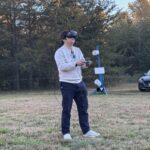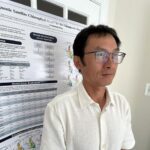Task Task 202
Ground-based Supersite/Network Measurements in Support of NASA/EOS Missions
Principal Investigator(s):
Q. Ji
Sponsor(s):
S-C. Tsay
Last Updated:
October 26, 2012 15:26:20
Description of Problem
According to NASA’s Science Mission Directorate (SMD), "in order to study the Earth as a whole system and understand how it is changing, NASA develops and supports a large number of Earth observing missions. These missions provide Earth science researchers the necessary data to address key questions about global climate change." (http://science.nasa.gov/earth-science/missions). As a major component of the Earth Science Division of NASA/SMD, "the Earth Observing System (EOS) is a coordinated series of polar-orbiting and low inclination satellites for long-term global observations of the land surface, biosphere, solid Earth, atmosphere, and oceans." (http://eospso.gsfc.nasa.gov). As the EOS follow-on, "the Decadal Survey will generate consensus recommendations from the Earth and environmental science and the applications communities regarding a systems approach to space-based Earth Science observations." (http://decadal.gsfc.nasa.gov). However, satellite observations alone is not sufficient to provide a complete understanding of the complex earth-atmosphere system. Extensive ground-based measurements and comprehensive modeling analysis are also indispensable parts in this endeavor.
Scientific Objectives and Approach
Satellite observations, modeling analysis, and ground-based measurements are complementary. They can be brought together through carefully designed field campaigns. The following sketch illustrates how the three components may support each other.
Accomplishments
To support NASA/EOS missions, we built the GSFC/SMART-COMMIT-ACHIEVE ground-based mobile laboratories (http://smartlabs.gsfc.nasa.gov). These facilities host a broad range of passive and active instruments for measuring atmospheric solar and terrestrial radiations, for in-situ observations of the chemical, optical, and microphysical properties of aerosols and trace gases, and for probing water vapor and clouds.
During the past decade we have participated over a dozen international field campaigns. Our footprints are around the world associated with satellite retrieval/validation projects.
The Major field deployments participated by SMART-COMMIT are: PRIDE (Puerto RIco Dust Experiment, June-July 2000); SAFARI (Southern Africa Fire-Atmosphere Research Initiative, Aug-Sep 2000); ACE-Asia (Aerosol Characterization Experiment-Asia, March-May 2001); CRYSTAL-FACE (Cirrus Regional Study of Tropical Anvils and Cirrus Layers – Florida Area Cirrus Experiment, July 2002); DOE/ARM Aerosol IOP (ARM Aerosol Intensive Observing Period, May 2003); UAE2 (United Arab Emirates Unified Aerosol Experiment, Aug-Sep 2004); EAST-AIRE (East Asian Study of Tropospheric Aerosols – International Regional Experiment, March-May 2005); BASE-ASIA (Biomass-burning Aerosols in South East-Asia: Smoke Impact Assessment, Feb-May 2006); NAMMA (NASA African Monsoon Multidisciplinary Activities, Aug-Sep 2006); CHINA2-AMY08 (Cloud, Humidity Interacting Natural/Anthropogenic Aerosols – Asian Monsoon Year-08, Apr-Sep 2008); RAJO-MEGHA (Radiation, Aerosol Joint Observations-Monsoon Experiment in Gangetic-Himalayas Area, Nepal & India, Apr-Jun 2009); 7-SEAS/Dongsha (7 South East Asian Studies/Dongsha, Mar-Jun 2010); and 7-SEAS/Southeast Asia (2012).
Normally we deploy our mobile laboratories as a supersite. To meet the dynamic mission requirements, since RAJO-MEGHA in 2009 we started to explore distributing our sensors in a network to gain more spatial information. The first step is to use pyranometers, which are relatively affordable and easier to handle. These instruments capture downward solar irradiance that is an essential driving force of climate. In order to guarantee and to enhance the data quality, we developed a new technique to measure the thermal-dome-effect (TDE) of a pyranometer (Ji & Tsay, 2010). We also demonstrated that if TDE is not accounted for, there will be an impact on climate studies (Ji et al., 2011).
Recently we used available NIST traceable light sources maintained in the Radiometric Calibration Laboratory at Goddard to calibration our improved pyranometers (Ji et al., 2011). For the first time, the historical pyranometer calibration equation (I=chV) has been significantly corrected. The new equation becomes I=cV+fσ(Ts4-Td4) to explicitly describe and account for the thermal effect. The photo below shows the setup of a pyranometer (PSP) in front of an integrating sphere (Grande).
Award:
NASA/GSFC/Climate & Radiation Laboratory: For Best First-authored Paper (Citation: For your excellent and innovative investigation of solar irradiance measurement with pyranometers for improved accuracy.)
Refereed Journal Publications
Ji, Q., S.-C. Tsay, R. A. Hansell, K. M. Lau, R. A. Hansell, J. J. Butler, and J. W. Cooper, 2011: A novel non-intrusive method to resolve the thermal-dome-effect of pyranometers: Radiometric calibration and implications, J. Geophys. Res., 116, D24105, doi:10.1029/2011JD016466.
Ji, Q., and S.-C. Tsay, 2010: A Novel Non-Intrusive Method to Resolve the Thermal-Dome-Effect of Pyranometers, Instrumentation and Observational Basis, J. Geophys. Res., 115, D00K21, doi:10.1029/2009JD013483.
Ji, Q., and S.-C. Tsay (2000), On the dome effect of Eppley pyrgeometers and pyranometers, Geophys. Res. Lett., 27, 971–974, doi:10.1029/ 1999GL011093.







